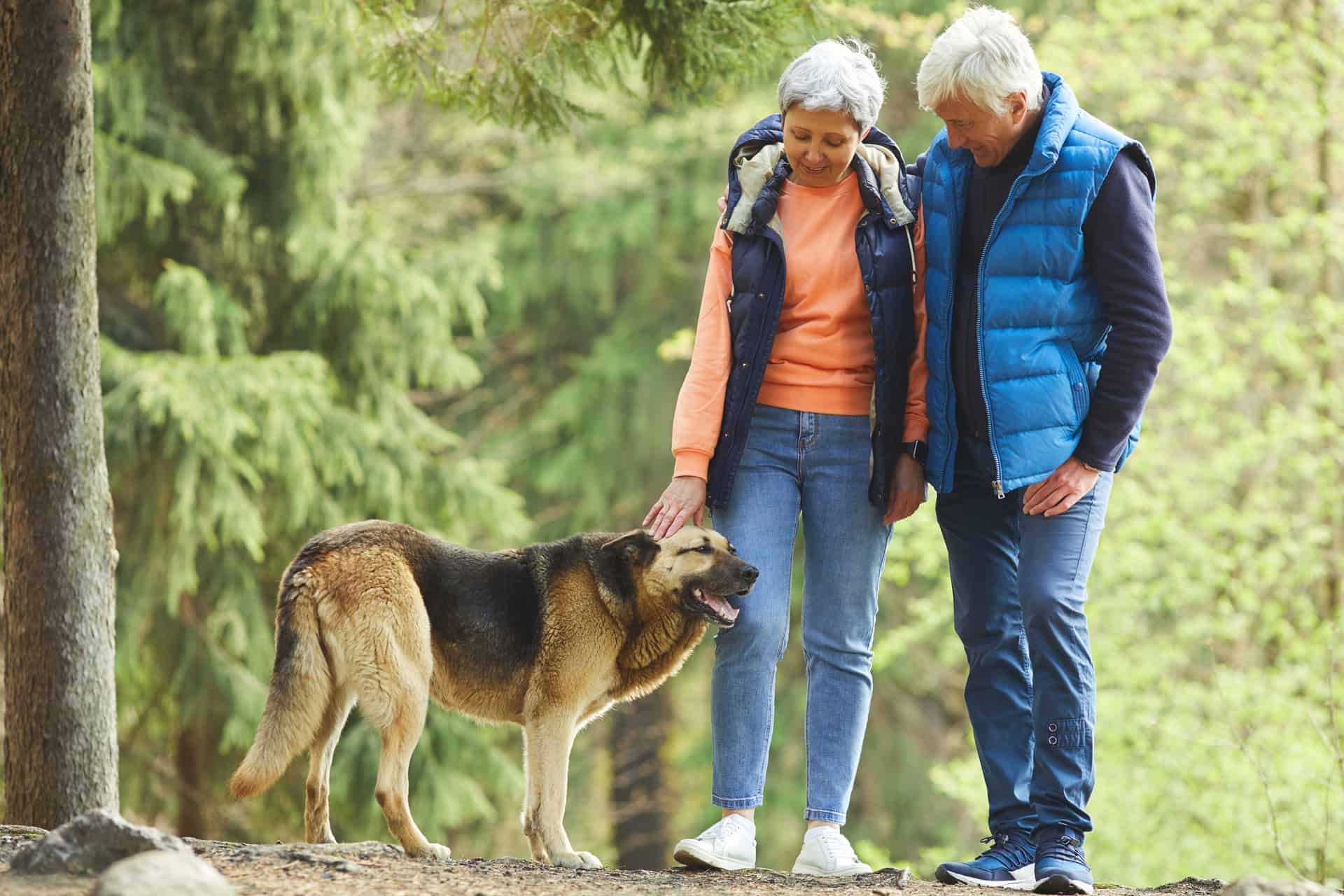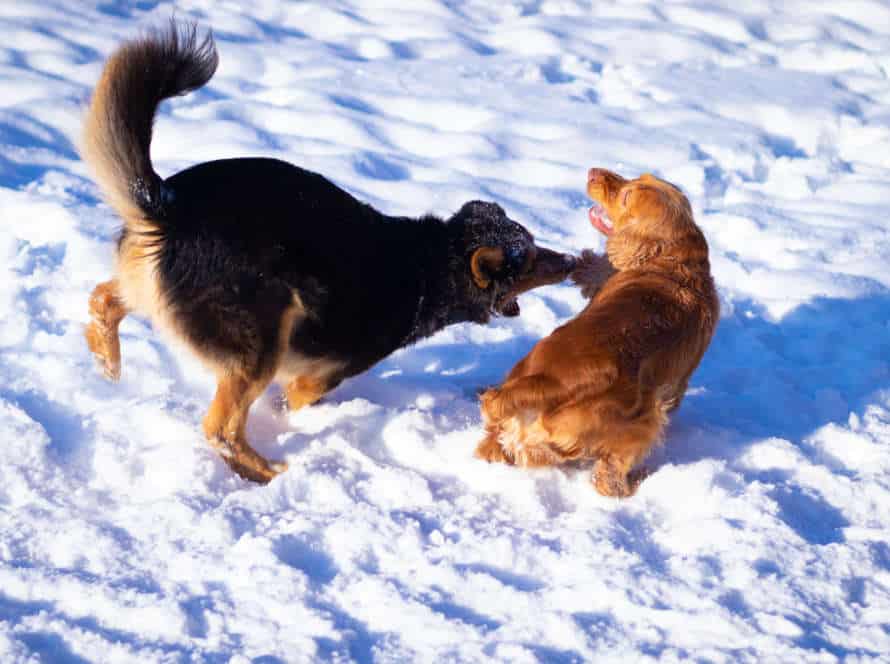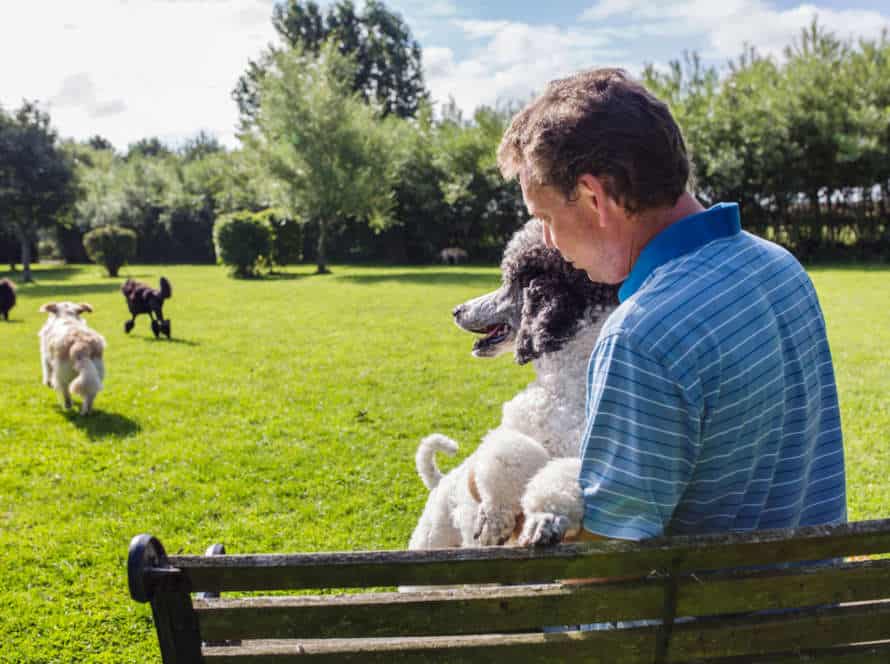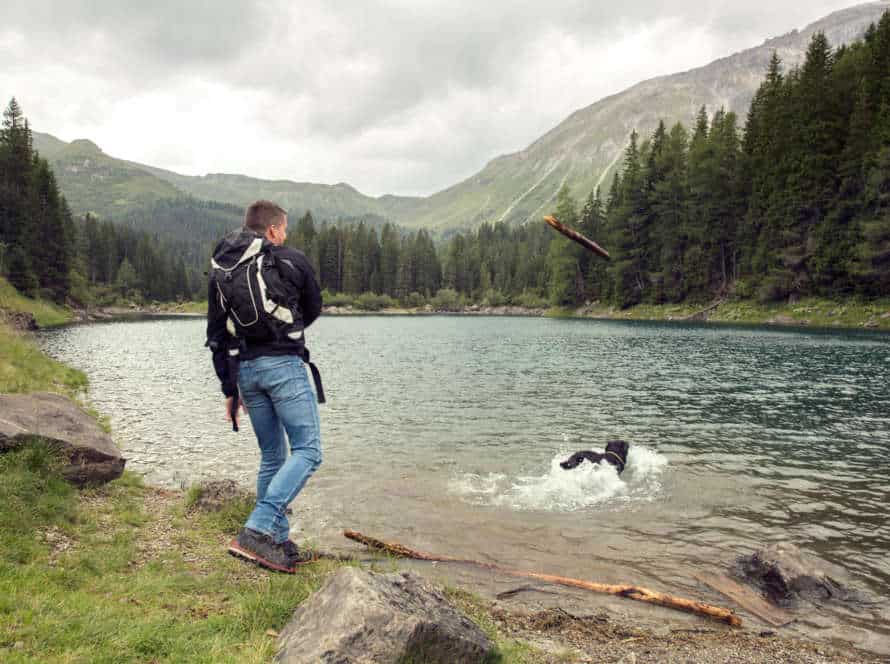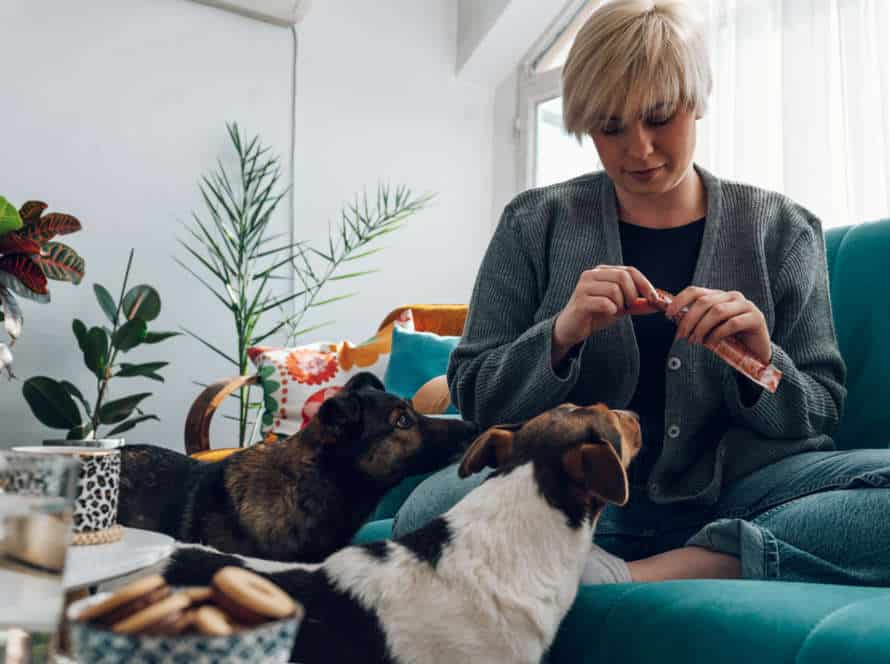Post-Hike Care: Pampering Your Pup After a Long Trek
After a long hike, pamper your pup with post-hike care.
Hydrate them with plenty of water.
Let them rest and avoid straining their muscles.
Check for injuries, scrapes, or even ticks. Treat accordingly; vet help if needed.
Massage gently to ease soreness and promote healing.
Clean up their fur and paws.
These tips will make sure your pooch is happy and ready for their next adventure!
Assessing Your Dog’s Condition
After a lengthy day of trekking, ensure your pup is in optimum health. To examine your dog, begin by verifying their hydration level. Provide clean, fresh water for your pup during the hike. On top of that, look for signs of fatigue, such as extreme exhaustion or limping. Check for any bruises, cuts, or scrapes that may have taken place during the day. Notice how they respond when coming into contact with certain obstacles. Have whatever they may need to heal, such as a warm bath or calming music. Use these tips and take the right steps to guarantee your pup is content and healthy after an exciting day of adventure.
Recognize signs of dehydration and exhaustion
It’s key to be on the lookout for signs of dehydration and exhaustion in your pup. Especially after a long hike or activity outdoors. Here are some symptoms to watch for:
Dehydration:
- Saliva that’s thick and a dry mouth
- Sunken eyes
- Being lethargic
- Loss of appetite
- Dry nose
Exhaustion:
- Heavy panting
- Weakness or wobbly legs
- Slow movements or not wanting to move
- Severe lethargy
- Heavy breathing
Give your pooch plenty of fresh water and shade. This helps them rehydrate and cool off. Monitor their behavior and take breaks when needed. In an emergency, reach out to your vet for help.
Check for injuries or soreness
Evaluating your pooch for any hurt or discomfort after a lengthy hike is critical for its post-walk care. Here’s how to gauge your pup’s condition:
- Check for scrapes, scratches, or any visible signs of trauma like limping or puffiness in any of its limbs.
- Look for indicators of dehydration like extreme panting, dry gums or nose, sunken eyes, and sluggishness.
- Examine your pup’s paws for any cuts, scrapes, or foreign objects like thorns or pebbles. Clean its feet with warm water and dry them properly.
- Scan for ticks and fleas, particularly if you have been on a path or in a wooded region.
- Observe your pup’s behavior for any signs of soreness, like stiffness, reluctance to move, or difficulty in getting up or down.
Pro Tip: Always carry a first-aid kit and plenty of water for your pup while hiking. It’s always better to be prepared for any unexpected situations.
Monitor your dog’s behavior for abnormal changes
Monitor your pup’s behavior for any strange changes, especially after a long hike. Signs to look out for:
- Limping
- Low appetite/thirst
- Excessive tiredness/restlessness
- Heavy panting/breathing
- Vomiting/diarrhea
- Weird behavior (whining, growling, aggression).
If you see big changes, take them to the vet right away. In the meantime, give them water, rest and a cozy spot to recover.
Pro Tip: Watch your dog closely and take care of them like you would any other family member. With proper care, they can enjoy more journeys with you!
Cleaning and Grooming Your Dog
Long hikes mean it’s time to tend to pup hygiene. Cleaning and grooming can get rid of excess dirt, mud and debris. Here’s the best way to groom your pooch after a trek. Give them a refreshing cleanse!
Clean your dog’s paws and coat of dirt and debris
After a long hike with your pup, it’s important to clean their paws and coat. Here’s how:
Paws:
- Fill a bowl with lukewarm water and add some mild dog shampoo.
- Dip the paws in one at a time, and rub to remove dirt and debris.
- Rinse and dry with a towel.
Coat:
- Use a brush to remove loose hair, dirt and debris.
- Fill a bucket/bathtub with warm water and add shampoo.
- Apply with a sponge or washcloth and lather.
- Rinse and dry with a towel.
Pro tip: Check the paws for cuts, scratches or blisters.
Brush out tangles and mats
Brushing out tangles and mats is a must-do after hiking with your pup. They can cause skin irritation and infection if not taken care of! Here are some tips:
- Use a slicker brush to get rid of loose knots and tangles. Start at the mat’s base and work outwards.
- To tackle stubborn mats, use a mat splitter or a de-matting tool. Cut and remove them in sections.
- Be gentle – don’t pull too hard or dig into your dog’s skin.
- Encourage your pooch with treats and positive reinforcement to make things more pleasant.
Trim nails and hair if necessary
Post-hike care of your pup is essential! Here’s how:
- Nail Trimming: After a long hike, your pup’s nails can become longer and sharper. This can cause discomfort, and also scratch furniture and flooring. So, trim their nails every two weeks. Use sharp, clean clippers. Cut only the tips, not the quick.
- Hair Trimming: Dogs with long hair can trap dirt, mud, and dust. This can be uncomfortable, and make them vulnerable to skin conditions. Use grooming scissors to carefully trim their paws, ears, and the hair between their toes. Trim evenly, avoiding any wounds.
Giving your dog a good cleaning and grooming after a hike will keep them healthy, hygienic, and happy.
Rest and Recovery
Day’s done, pup’s tired! Let’s give ’em rest. Time to recover and heal after a long outdoor trek. We’ll show you the best way to help your pup get back up and running. Ready for some post-hike pampering? Here we go!
Provide a comfortable sleeping area
It’s essential to give your pup the best after a long hike. Here are some tips for making a snuggly sleeping spot:
- Pick a place cool, dry and out of the sun.
- Use a soft and supportive bed or mat, like cotton or wool.
- Offer a blanket or towel if your pup gets cold easily.
- Place a water bowl close by.
- Keep their area clean.
Giving your furry pal a comfy spot for rest helps them recover from their hike.
Allow for plenty of rest and relaxation
After a long hike or trek, your furry friend needs proper rest and recovery. Pamper them with these post-hike care tips!
- Provide a comfy, calm spot for them to relax.
- Keep them hydrated with lots of water.
- Gently massage their muscles to reduce any stiffness.
- Reward their efforts with treats or a favorite toy.
- Remember, rest and recovery are key to their wellbeing. Allow them plenty of time and care after a long hike.
Consider using supplements or medications to aid in recovery
If your pup had a lengthy hike and is having a hard time recovering, there are supplements or meds to help. Consider:
- Joint supplements like glucosamine and chondroitin, which can help with healthy joints, reduce inflammation and ease the pain.
- CBD oil is becoming popular for its ability to reduce pain and inflammation, lower anxiousness and relax.
- Anti-inflammatory medication might be an option too – ask your vet if a NSAID medication would be appropriate.
It’s crucial to chat with your vet prior to giving your dog any supplements or meds. Also, provide them with a comfy area to rest and regain energy. Pro tip: Always speak to your vet before giving your dog any supplement or medication.
Nutrition for Recovery
After a long hike, it’s essential to make sure your pup gets proper nutrition. This diet affects their energy and coat, skin, and overall health. So, after a long trek, it’s best to give them a balanced diet with protein, healthy fats, vitamins and minerals. This will ensure optimal recovery.
Offer plenty of water to rehydrate
After a long hike, your pup might be panting, drooling or feeling exhausted. Providing enough water is key to help them recover. Dogs need plenty of water to keep their body temperature stable, move nutrients around and get rid of waste. Here are some tips:
- Offer small portions of water rather than a full bowl at once. Too much water quickly can make them vomit and unwell.
- Add electrolytes or ice cubes to their water to replace minerals they lost while exercising.
- Carry a collapsible bowl and a water bottle on your hike. That way, they’ll stay hydrated even without any water sources nearby.
Provide a balanced and nutrient-rich meal
For your pup to recover after a hike, just like humans, they need a healthy and nutrient-rich meal. Here are some essential nutrients to include:
- Protein: To help repair any muscles and tissues that have been strained. Use lean meats, like chicken or turkey. Or, if you are vegetarian, tofu and beans are great sources.
- Carbohydrates: To replenish energy stores. Sweet potatoes, brown rice, and whole grain pasta are all good options.
- Fats: For healthy skin and coat. Salmon and flaxseed are rich in omega-3s.
- Vitamins and Minerals: Fruits and vegetables are a great source of essential micronutrients. Try sweet potatoes, blueberries, carrots, and green beans.
Remember, the exact meal plan for your pup depends on their breed, age, weight, and activity level. Consult with your vet to determine the best post-hike meal.
Consider adding supplements to support recovery and immune health
Taking your furry buddy on a hike? Be mindful of their post-hike needs!
Nutritional supplements can help with recovery and immune health.
Omega-3 Fatty Acids are essential for reducing inflammation and promoting joint health.
Probiotics are great for digestion and warding off infections.
Glucosamine & Chondroitin support joints for active dogs.
Antioxidants like Vitamin E & C reduce oxidative stress from exercise & toxins.
Check with your vet for the right dose & supplement product for your pet’s breed, age, & health.
Follow-Up Care and Monitoring
A long hike is over! It is vital to look after your pup and watch for any signs of tiredness or harm. Giving your pup the right care makes sure their recovery is good. Future hikes can be fun, secure, and pleasant.
In this article, we will talk about the significance of post-hike care and supervision.
Check on your dog periodically after the hike
After a long hike, it’s important to inspect your pup. Here’s how to pamper them afterwards:
- Check for any injuries: Look at paws, legs, belly and ears for cuts, scrapes or ticks.
- Make sure they’re hydrated: Give them access to clean water.
- Give them a nutritious meal: To help restore energy and muscles.
- Massage and groom: To help them relax and feel special.
By following these tips, you can make sure your dog stays healthy and content after an intense hike.
Schedule a follow-up vet appointment if necessary
It’s essential to have a vet follow-up if your pup needs it after a long hike. Not all dogs recover well, so some may need medical attention. Here’s how to handle post-hike care for your pup:
- Check paws, legs and mouth for any injuries, cuts or abrasions. Clean wounds if found.
- Give water to replace fluids lost during the hike.
- If pup seems tired or can’t walk, rest with water and monitor. Contact vet if condition doesn’t improve.
- Follow up with a vet appointment if any change in behavior, appetite, or signs of discomfort appear up to 48 hours after the hike.
Pro tip: Monitor symptoms closely and get help from their veterinarian for prompt recovery.
Monitor your dog for any ongoing issues or changes
It is important to watch your pup after a hike. Here’s what to do:
- Inspect for cuts, bruises, and soreness.
- Check for ticks and fleas and take them off.
- Look out for signs of fatigue, dehydration, or heatstroke – excessive panting, lethargy, or loss of appetite. Give water and rest.
- Keep an eye on your dog’s behavior and mood – watch for any changes such as anxiety or aggression.
If something is not right, contact the vet.
Frequently Asked Questions
1. What should I do to take care of my dog after a long hike?
After a long hike, it’s important to ensure your dog is well-hydrated, fed, and rested. Check your dog’s paws for cuts or debris, and give them a good rinse if necessary. You may also want to consider a gentle massage or hot/cold therapy to relieve any soreness.
2. Is it safe to give my dog a bath after a long hike?
Yes, it’s safe to give your dog a bath after a long hike. However, wait until your dog has cooled down and is no longer panting heavily. Use warm water and a gentle pet shampoo, and avoid getting water in your dog’s ears.
3. Can I apply any ointments or creams to my dog’s paws?
Yes, you can apply a pet-safe ointment or cream to your dog’s paws to help soothe any cuts or abrasions. Be sure to apply a light layer and keep an eye on your dog to ensure they don’t lick it off.
4. Should I give my dog any supplements after a long hike?
Consult with your veterinarian to see if your dog could benefit from any supplements after a long hike. Some dogs may benefit from joint supplements or omega-3 fatty acids to help support their overall health.
5. How long should I rest my dog after a long hike?
The amount of rest your dog needs after a long hike will depend on their age, size, activity level, and overall health. To prevent injury, it’s recommended to gradually increase the duration and intensity of hikes for your dog over time. Be sure to monitor your dog’s behavior and energy levels, and make adjustments as needed.
6. Are there any grooming tips to keep in mind after a long hike?
After a long hike, your dog may be covered in dirt, mud, and debris. Use a brush or comb to remove any tangles or mats in their fur, and give them a thorough brushing to remove loose hair. You may also want to trim any excess fur around their paws or tail to prevent tangles and mats from forming.

